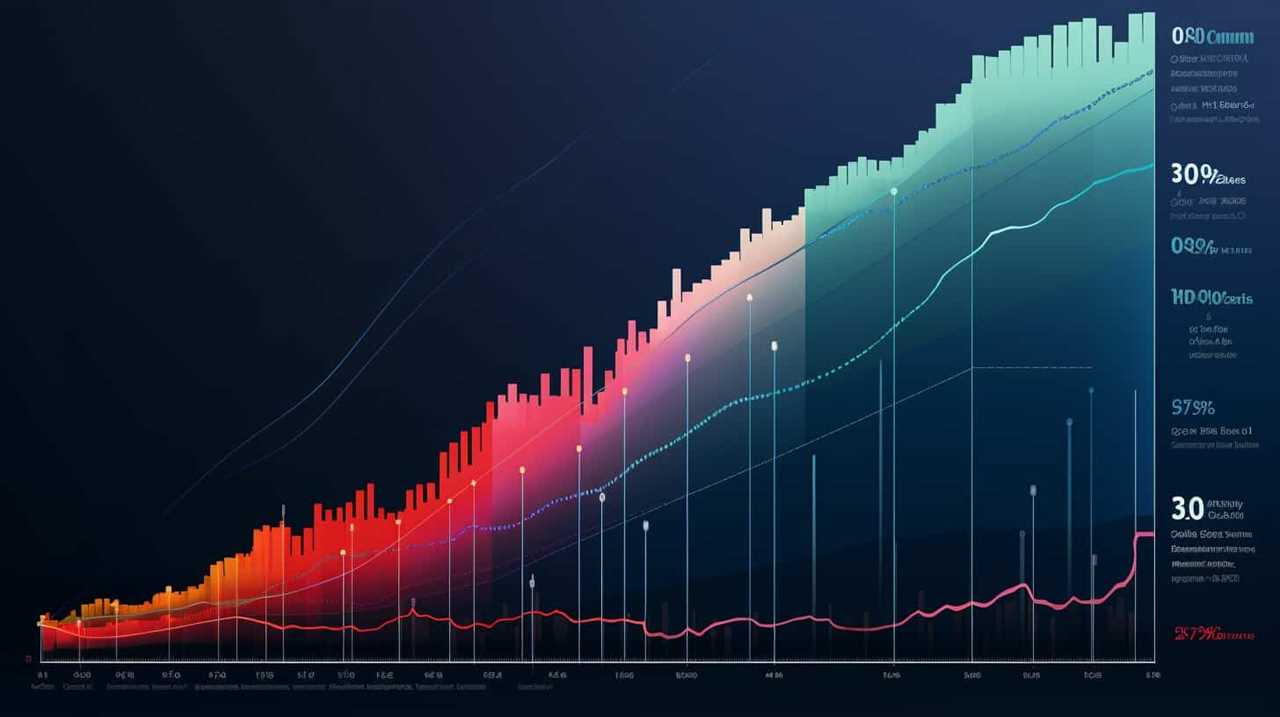Ever wondered why some websites pop up first on search engine results?
Well, we’re here to shed some light on the matter. In this article, we’ll discuss the website characteristics that are also considered technical SEO ranking factors.
These factors, including website speed, mobile-friendliness, site architecture, URL structure, crawlability, and structured data markup, play a crucial role in determining how well a website performs in search rankings.
So, let’s dive in and discover the key ingredients for SEO success.

Key Takeaways
- Website speed and mobile-friendliness are crucial technical SEO ranking factors.
- Site architecture and navigation usability play a significant role in user experience and SEO rankings.
- URL structure and optimization are important for improving visibility and click-through rates.
- Proper implementation of URL redirects and structured data markup can enhance crawlability, indexability, and user experience.
Website Speed
Website speed is an essential technical SEO ranking factor that affects user experience and search engine visibility.
To optimize website load time, it’s crucial to focus on improving server response time. The faster your website loads, the better the user experience, leading to increased engagement and lower bounce rates.
Additionally, search engines prioritize websites with faster load times, resulting in improved rankings and visibility.
To achieve website load time optimization, consider optimizing images and files, reducing HTTP requests, and leveraging browser caching.

By improving server response time, your website will deliver content more efficiently, ultimately enhancing user satisfaction and SEO performance.
Now let’s transition to the next section, where we’ll discuss the importance of mobile-friendliness in technical SEO ranking factors.
Mobile-Friendliness
Now let’s delve into the importance of ensuring that your site is mobile-friendly, as it directly impacts technical SEO ranking factors.
In today’s digital landscape, with the increasing use of smartphones and tablets, having a mobile-friendly website is crucial for success. Responsive design is key in making sure your site adapts and displays properly on different devices, providing a seamless user experience.

A mobile-friendly website not only improves user satisfaction but also contributes to your site’s overall SEO performance. Google considers mobile user experience as a ranking factor, meaning that if your site isn’t optimized for mobile, it may be penalized in search rankings. Therefore, it’s essential to prioritize mobile-friendliness in order to improve your technical SEO and attract more organic traffic.
Site Architecture
When it comes to site architecture, there are several key points to consider for SEO purposes.
One important aspect is the URL structure, as it plays a role in how search engines understand and categorize your website.
Additionally, navigation usability is crucial to ensure that both users and search engines can easily navigate through your site.

URL Structure Importance
We can’t underestimate the impact of a well-structured URL on our site’s technical SEO ranking factors. A clean URL structure offers significant SEO benefits, helping search engines and users understand the content of our webpages. It improves the user experience by providing clear and descriptive URLs that are easy to read and remember. Moreover, a clean URL structure enhances the crawlability and indexability of our website, making it easier for search engines to discover and rank our pages. On the other hand, URL length plays a crucial role in SEO performance. Long and complex URLs can negatively affect our rankings, as they may be perceived as spammy or less trustworthy. Therefore, it is essential to keep our URLs concise, relevant, and keyword-focused.
| URL Structure Importance | |
|---|---|
| Benefits of Clean URL Structure | Impact of URL Length |
| – Enhances user experience | – Long URLs can be spammy |
| – Improves crawlability and indexability | – Complex URLs may appear less trustworthy |
| – Helps search engines understand content | – Short, concise URLs are preferred |
| – Easy to read and remember | – Keyword-focused URLs are more effective |
Navigation Usability and SEO
One crucial aspect of technical SEO ranking factors is the navigation usability and site architecture.
When it comes to user experience metrics, a well-designed site architecture can greatly impact how users navigate your website. A clear and intuitive navigation menu can make it easier for users to find the information they’re looking for, leading to longer visit durations and lower bounce rates.
Additionally, a well-structured site architecture can improve internal linking strategies, which are important for SEO. By strategically linking relevant pages within your website, you can help search engines understand the hierarchy and importance of your content. This can ultimately lead to better crawlability, indexation, and overall SEO performance.

Therefore, optimizing your navigation usability and site architecture is essential for improving both user experience and SEO rankings.
URL Structure
When it comes to URL structure, there are a few key points to consider for SEO ranking factors.
First, it’s important to have SEO-friendly URLs that are easy to read and understand by both search engines and users.
Second, optimizing keywords in the URLs can help improve the relevance and visibility of your website in search results.

Lastly, using proper URL redirects ensures that users and search engines are directed to the correct page, minimizing the potential for broken links and improving user experience.
SEO-friendly URLs
Although often overlooked, SEO-friendly URLs play a crucial role in improving a website’s technical SEO ranking factors. The impact of URL structure on search engine rankings can’t be underestimated.
Here are four URL optimization techniques that can enhance your website’s visibility:
- Use descriptive keywords: Incorporate relevant keywords in your URLs to give search engines an idea of what your page is about.
- Keep it concise: Shorter URLs are easier for users to remember and share. Avoid long, convoluted URLs that can confuse both search engines and users.
- Use hyphens instead of underscores: Search engines treat hyphens as word separators, making it easier to read and understand the URL structure.
- Avoid dynamic parameters: Clean URLs without unnecessary parameters are preferred by search engines, as they’re more user-friendly and easier to index.
Implementing these URL optimization techniques can enhance your website’s technical SEO ranking factors and improve its visibility in search engine results.

Keyword Optimization in URLs
To continue our discussion on URL optimization techniques, we’ll now explore the importance of keyword optimization in URLs for improving a website’s technical SEO ranking factors.
Keyword optimization in URLs involves incorporating relevant keywords into the structure of the URL to enhance content relevancy and improve user experience optimization.
When search engines crawl a website, they analyze the URL structure to understand the content and context of the page. By including targeted keywords in the URL, you can signal to search engines the relevance of your content and increase the chances of ranking higher in search results.
Additionally, keyword-optimized URLs make it easier for users to understand what the page is about and can improve click-through rates.

Therefore, it’s essential to carefully craft your URLs with relevant keywords to maximize your website’s technical SEO ranking factors.
Proper URL Redirects
One important factor to consider for technical SEO ranking is the proper implementation of URL redirects within the website’s structure.
Here are some key points to keep in mind when it comes to handling URL redirects:
- Impact of 301 vs 302 redirects on SEO rankings: It’s crucial to choose the appropriate redirect type. A 301 redirect is a permanent redirect that signals to search engines that the original URL has permanently moved to a new location. This transfer of authority helps preserve the SEO value of the original page. On the other hand, a 302 redirect is a temporary redirect that indicates the original URL is temporarily moved, and search engines may not transfer the SEO value to the new URL.
- Best practices for handling URL redirects during website migrations: During website migrations, it’s important to plan and execute proper URL redirects to ensure a smooth transition. This involves mapping old URLs to new ones, redirecting each old URL to its corresponding new URL, and testing the redirects to ensure they’re working correctly. Additionally, it’s advisable to update internal links, XML sitemaps, and canonical tags to reflect the new URL structure.
Crawlability and Indexability
For effective technical SEO ranking, ensuring crawlability and indexability of a website is crucial. Crawlability refers to the ability of search engines to access and navigate through a website’s pages. Indexability refers to the inclusion of web pages in search engine indexes.

To improve crawlability and indexability, it’s important to use canonical tags. These tags help search engines understand the preferred version of a webpage when there are multiple URLs with similar content. Canonical tags are essential for preventing duplicate content issues and ensuring that the correct page is indexed.
Another factor that affects crawlability is the robots.txt file. This file instructs search engine crawlers on which parts of the website should or shouldn’t be crawled.
By optimizing these factors, websites can improve their crawlability and indexability, leading to better search engine visibility.
Now, let’s delve into the next topic: structured data markup.

Structured Data Markup
Now that we’ve covered the importance of crawlability and indexability, let’s move on to the next crucial aspect of technical SEO ranking: structured data markup.
Structured data markup refers to the implementation of code that helps search engines understand the content of a webpage. Here are four key points to keep in mind when it comes to structured data markup:
- Rich snippets optimization: Rich snippets are enhanced search results that provide extra information about a webpage. By optimizing your structured data markup, you can increase the chances of your website appearing with rich snippets in search engine results, which can improve click-through rates and visibility.
- Schema markup implementation: Schema markup is a specific type of structured data markup that uses a standardized vocabulary to provide context and meaning to the content on a webpage. Implementing schema markup can help search engines better understand your website’s content and improve its visibility in search results.
- Increased organic visibility: By incorporating structured data markup, you can potentially enhance your website’s organic visibility in search engine results. This is because structured data provides additional information to search engines, allowing them to display more relevant and detailed search results for users.
- Improved user experience: Structured data markup not only benefits search engines but also improves the user experience. By providing more accurate and comprehensive information in search results, users can make more informed decisions about which website to visit. This can lead to higher engagement, lower bounce rates, and increased conversions.
Incorporating structured data markup into your website is a crucial step in optimizing your technical SEO. By implementing rich snippets optimization and schema markup, you can improve your website’s visibility, organic traffic, and user experience.
Frequently Asked Questions
How Does Website Speed Impact Search Engine Rankings?
Website speed plays a crucial role in search engine rankings. A slow-loading website can negatively impact user experience, leading to higher bounce rates and lower conversions. It also affects crawlability, making it harder for search engines to index your pages effectively.

Optimizing website design and improving site speed can result in better rankings and increased organic traffic. Therefore, it’s essential to prioritize website speed as a technical SEO ranking factor.
What Are the Key Elements of a Mobile-Friendly Website?
When it comes to a mobile-friendly website, responsive design and mobile usability are key elements.
A responsive design ensures that the website adapts and functions properly on different devices.
Mobile usability focuses on providing a seamless user experience on mobile devices.

These factors are crucial because a large number of internet users access websites on their mobile devices.
Ensuring a mobile-friendly experience can improve user satisfaction and potentially boost search engine rankings.
How Does Site Architecture Affect SEO Performance?
Site architecture plays a crucial role in SEO performance. It directly impacts user engagement and crawlability.
A well-structured site architecture makes it easier for search engines to crawl and index your content, improving your chances of ranking higher in search results. It also enhances user experience by allowing visitors to navigate your site more easily.

What Are the Best Practices for Optimizing URL Structure for Seo?
Optimizing URL structure is crucial for SEO success. We can achieve this by following the best practices for keyword research and understanding the importance of meta tags in SEO optimization.
A well-structured URL helps search engines understand the content of the page, making it easier for them to crawl and index your website.
How Does the Presence of Structured Data Markup Influence Search Engine Rankings?
The presence of structured data markup, like schema markup, can have a significant impact on search engine rankings. By using rich snippets and providing additional information about your content, you can increase visibility and attract more targeted traffic.
Schema markup helps search engines understand the context and meaning of your content, resulting in higher rankings and improved click-through rates. Implementing structured data markup is one of the best practices for optimizing SEO and can provide numerous benefits for your website.

Conclusion
In our journey through the world of website characteristics, we’ve discovered the hidden treasures of technical SEO ranking factors.
Just like the wind guides a ship to its destination, website speed, mobile-friendliness, site architecture, URL structure, crawlability, and indexability act as guiding beacons for search engines.
And like a map that leads us to our desired location, structured data markup helps search engines understand and appreciate the content on our websites.
By embracing these factors, we can set sail towards higher rankings and greater online success.











